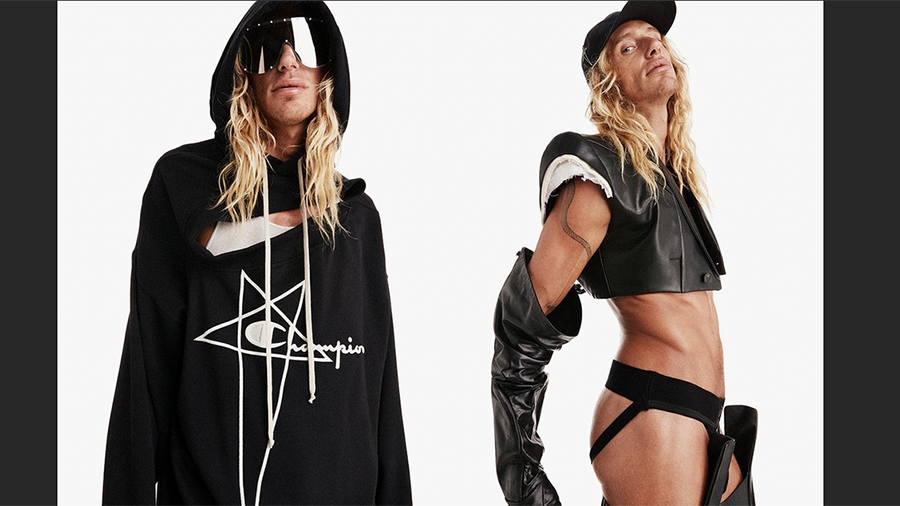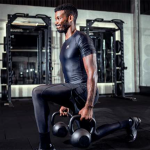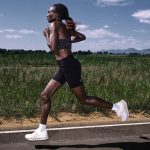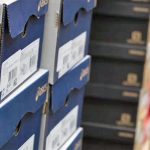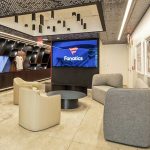HanesBrands, Inc. reported global Champion brand sales slumped 14 percent on a reported basis, 9 percent in constant currencies, in the third quarter. On an analyst call, Steve Bratspies, CEO, said Champion was hurt by soft consumer demand in the U.S., order cancellations in the U.S. from late shipments as retailers tightly managed inventory, and lingering COVID challenges in certain Asian markets.
These headwinds offset currency-neutral growth in Europe and the U.S. collegiate channels. Champion saw similar declines in both the U.S. and internationally.
Overall, HanesBrands reported earnings that came in line with expectations as softer-than-expected sales were offset by expense controls. However, the company reduced its outlook for the year due to macroeconomic pressures.
“Like every brand, Champion is not immune to the current market challenges that everyone is facing,” said Bratspies. “And we certainly saw that in Q3, and we think those pressures are going to continue through Q4, and that’s what we put it to our guide. Beyond the near-term, I feel really good about what we can do with Champion, and we continue to find new opportunities as we go forward.”
On the positive side, he said Champion has seen strength in the college channel, in Europe and “good strength” in its printwear business. The challenges have been in its domestic wholesale business.
Bratspies noted that Vanessa LeFebvre, formerly at Adidas, joined HanesBrands in August as head of its global activewear business and is working to address the weakness. He said, “In her first 90 days, she has taken a deep dive into the global Champion business and is taking steps to build on our initial full potential work. She has brought in a new head designer in the U.S., identified additional opportunities for global collaboration and has begun working with her team to unlock the next phase of Champion’s full potential, with a focus on improving brand identity, product, channel segmentation, and global merchandising.”
Bratspies also noted that supply chain capabilities being built at Champion will enable to brand to react faster to opportunities while product and channel segmentation are being prioritized.
Bratspies said, “We are really leaning into the Champion brand. We understand where our opportunities are, and we are doing the work. Now, it takes time to do this work, but we are going to do it right, and we are doing it right for the long-term benefit of the brand. I am not satisfied with where we are today, I will tell you that, but we are going to continue to improve this business. And I think the most important thing is we are taking action.”
Elevated Inventories Slow Orders
Overall, Bratspies noted how the retail environment has weakened over the last two quarters to drive HanesBrands to lower its outlook for the year.
“Looking at the current environment, in just 6 months, we’ve seen the consumer and retail landscape flip from one with too much demand and not enough supply to one with too much supply and not enough demand. Inflation is hitting consumers’ wallets and slowing demand,” said Bratspies. “Retailers broadly are sitting on too much overall inventory, which is impacting orders in different ways across our business.”
In Innerwear, retail inventory is below last year’s level in the marketplace but broader pushes to rebalance inventory levels are negatively impacting near-term replenishment orders as well as delaying the timing of certain events.
He added that as noted by other retailers, slowing consumer demand is being seen across channels and excess activewear inventory is resulting in order cancellations, including for Champion. He added, “The combination of these factors weighed on our sales performance in the third quarter and we expect these headwinds to continue through the fourth quarter.”
Companywide, sales from continuing operations slid 6.6 percent in the third quarter ended October to $1.67 billion, missing company guidance in the range of $1.73 billion to $1.78 billion.
The latest quarter includes a $59 million unfavorable impact from foreign exchange rates. On a constant currency basis, sales decreased 3 percent with the decline attributed to a slowdown in consumer spending in the U.S. and certain Asian markets coupled with the impact to orders as U.S. retailers tightly manage their overall inventory levels. These headwinds offset innerwear growth in Australia and the Other Americas as well as Champion growth in Europe.
Net earnings were $80.1 million, or 23 cents a share, down from $151.8 million, or 50 cents, a year ago. On an adjusted basis, profits were down 45.7 percent to $102 million, or 29 cents, from $188 million, or 53 cents, a year ago. Adjusted EPS was in line with guidance in the range of 27 cents to 32 cents.
The earnings adjustments primarily include bad debt expenses, excess and obsolete inventory write-offs, pension expense, other compensation-related items and charges related to a ransomware attack.
Gross Margins Eerode 540 Basis Points
Gross margin declined 540 basis points to 33.7 percent. Adjusted Gross Profit, which excludes certain costs related to the company’s Full Potential improvement plan, declined approximately 460 basis points compared to the prior year. Near-term headwinds, including commodity and ocean freight inflation as well as manufacturing time-out costs related to its inventory reduction actions, represented more than 500 basis points of year-over-year margin decline in the quarter. These headwinds were partially offset by pricing actions, decreased air freight use, and Full Potential cost savings initiatives.
In May 2021, HBI launched its Full Potential plan, a roadmap to drive improved revenue and profits during the following three years.
SG&A expenses declined 9 percent to $421 million as compared to last year. Adjusted SG&A expenses, which exclude certain costs related to its Full Potential plan, declined 6 percent from last year to $408 million. As a percent of sales, adjusted SG&A expense of 24.4 percent was comparable with the prior year as cost controls and expense efficiencies from its Full Potential initiatives offset investments in brand marketing and technology related to Full Potential.
Operating profit reached $141 million against $235 million a year ago. On an adjusted basis, operating profit slid 36.4 percent to $168 million with operating margins declining nearly 470 basis points to 10.0 percent.
Activewear Sales Flat In Q3
By segment, Activewear sales eased 0.3 percent to $461.0 million. Besides Champion, Hanesbrands’ Activewear segment makes products under Hanes, Alternative, Gear for Sports, Comfortwash, JMS/Just My Size, and Hanes Beefy-T.
Relative to last year, the Activewear segment experienced continued growth in the collegiate channel as well as solid growth in the printwear channel for both its Champion and Hanes brands. This growth was essentially offset by declines in its other channels due to lower point-of-sale trends and higher Activewear inventory levels at retail that drove order cancellations, particularly within Champion. By brand, Champion sales within the Activewear reporting segment decreased 9 percent as compared to the prior year while sales of other activewear brands within the Activewear reporting segment increased by 15 percent.
The operating margin for the segment of 11.6 percent decreased by approximately 490 basis points compared to the prior year as the impact of inflation, manufacturing time-out costs, and an unfavorable product mix more than offset the benefits from price increases and SG&A cost controls.
Innerwear segment sales decreased 11 percent to $625.1 million while operating income declined 32.4 percent to $99.8 million. Hanesbrands’ Innerwear business makes products under Hanes, Bali, Maidenform, Playtex, Champion, JMS/Just My Size, Bras N Things, and Polo Ralph Lauren.
The sales decline was driven by macroeconomic pressures that weighed on consumer spending as well as the impact of retailer actions to manage inventory. Although the company’s inventory at retail was below the prior year, retailer actions to tightly manage overall inventory levels negatively impacted near-term replenishment orders and delayed the timing of certain events. These pressures more than offset the benefits from the first-quarter price increase and retail space gains.
Operating margin of 16.0 percent decreased by 505 basis points compared to the prior year as input cost inflation, lower sales volume, manufacturing time-out costs and an unfavorable product mix more than offset the benefit from higher prices and SG&A cost controls.
International sales decreased 6.4 percent to $502.1 million but increased 5 percent on a constant currency basis, driven by Champion growth in Europe as well as innerwear growth in Australia and the Other Americas. This growth more than offset Champion’s declines in certain Asian markets. Brands sold internationally include Champion, Bonds, Sheridan, Bras N Things, Hanes, Playtex, Berlei, Wonderbra, Maidenform, Rinbros, Zorba, Sol y Oro, and Polo Ralph Lauren.
Operating margin for the segment of 13.9 percent decreased by approximately 220 basis points compared to the prior year driven primarily by the impact of inflation, which more than offset SG&A cost controls.
Inventory Up 31 Percent
Inventory at the end of the third quarter was $2.14 billion, an increase of 31 percent over the prior year. The increase was driven predominantly by the combination of higher units and higher inflation on input and transportation costs. On a unit basis, inventory climbed 16 percent over the prior year but decreased 6 percent as compared to the second-quarter 2022. The company is progressing on its previously disclosed mitigation initiatives and continues to expect to end 2022 with lower units in inventory as compared to year-end 2021. By comparison, second-quarter inventory, on a year-over-year basis, was up 37 percent in dollars and 19 percent in units.
For the fourth quarter, sales from continuing operations of approximately $1.40 billion to $1.45 billion, which includes a projected headwind of approximately $68 million from changes in foreign currency exchange rates. At the midpoint, this represents an approximate 15 percent decline as compared to the prior year on a constant currency basis and a 19 percent decline on a reported basis.
GAAP EPS from continuing operations is expected to range from approximately break-even to 7 cents a share (19 cents a year ago) and adjusted EPS to range from 4 cents to 11 cents (44 cents a year ago.)
The updated outlook for 2022 calls for:
- Sales between $6.16 billion to $6.21 billion, which includes a projected headwind of approximately $196 million from changes in foreign currency exchange rates. At the midpoint, this represents a decline of 6 percent on a constant-currency basis and 9 percent on a reported basis, prior, $6.45 billion to $6.55 billion, down 2 percent constant-currency and 4 percent reported;
- GAAP operating profit ranges from $512 million to $542 million, prior, $570 million to $620 million;
- Adjusted operating profit to range from approximately $567 million to $597 million, which includes a projected headwind of approximately $26 million from changes in foreign currency exchange rates, prior, $630 million to $680 million;
- Charges for actions related to the Full Potential of $55 million, prior, $60 million;
- GAAP EPS to range from approximately 82 cents to 89 cents, prior, 97 cents to $1.09; and
- Adjusted EPS to range from approximately 95 cents to $1.02, prior, $1.11 to $1.23.
Photo courtesy Champion x Rick Owen

